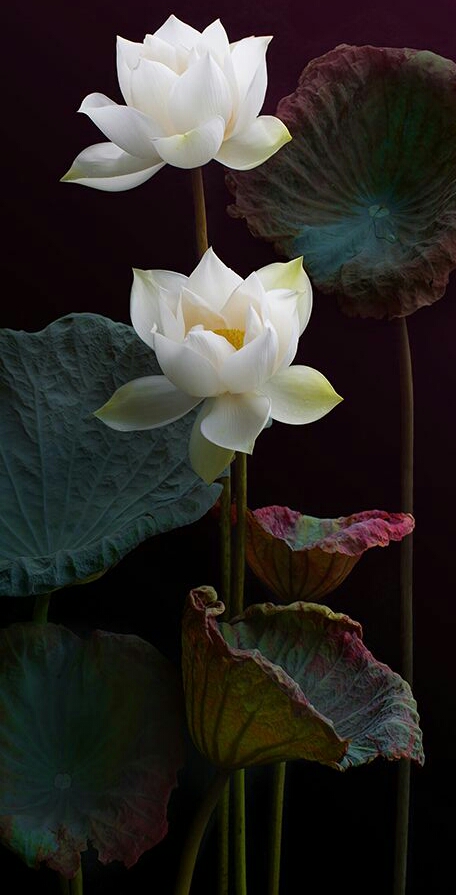“Cosmic Tree of Life”
Apart from the Hometree of the Na’vi, James Cameron’s Avatar used this exact Dravidian Banyan Tree of Ancestors as the “Tree of Voices” and “Tree of Souls” both sacred sites, where one can hear ancestors’ voices and connect with ancestors’ souls and access the cultural memories of the entire Pandora.
Vedic Hymns of Bhagwat Geeta:
sri-bhagavan uvaca
urdhva-mulam adhah-sakham
asvattham prahur avyayam
chandamsi yasya parnani
yas tam veda sa veda-vit
śrī bhagavān uvāca—the Supreme Personality of Godhead said; ūrdhva-mūlam—with roots above; adhaḥ—downwards; śākham—branches; aśvattham—banyan tree; prāhuḥ—said; avyayam—eternal; chandāṁsi—Vedic hymns; yasya—of which; parṇāni—the leaves; yaḥ—anyone; tam—that; veda—knows; saḥ—he;veda-vit—the knower of the Vedas.

The Banyan tree (Ficus benghalensis) is mysterious looking with widespread, aerial roots that give the appearance of numerous trunks when they reach the ground. It grows up to 100 feet tall and can cover many acres of land in its native regions of India and Asia.
Facts:
- Indian banyan (Ficus benghalensis), which is the national tree of the Republic of India.
- There is a differece between Peepal tree and Banyan Tree.
In ancient times, among many communities and among the four classical civilizations: Chinese, Egyptian, Indian and Mesopotamian, tree worship is first recorded in the Harappan civilization or otherwise called the Indus valley or Indian civilization, which could possibly be a Dravidian orProto-Dravidian culture.
Trees are sacred in India, and often associated with God and Goddess. The Indian name of the Banyan tree is Vat Vriksha.
Why this tree called Banyan?
When the British came to India, they noticed that members of the trading or Bania community used to gather under a large shady fig tree, which they named the Banyan, from Bania. Technically, Ficus benghalensis, the Banyan belongs to the Fig family. There are various types of fig trees all over the world, some of these are sacred. The most popular one is the Ficus religiosa or the Pipal which became especially popular in Buddhist times because it was under this tree that Gautama Siddhartha of the Sakya clan attained enlightenment. It was the leaves of a fig tree that Adam and Eve used to cover their nakedness in Eden after they were tempted to eat the Forbidden Fruit by Satan.
Spirituality:

The meaning of upside down tree can be found in the reflection of the Banyan tree in water. The refeclection symbolize the Brahma to be the root of this material tree, and from the root, according to Sankhya philosophy, come prakrti, purusa, then the three gunas, then the five gross elements (panca-maha-bhuta), then the ten senses (dasendriya), mind, etc. In this way they divide up the whole material world into twenty-four elements. If Brahma is the center of all manifestations, then this material world is a manifestation of the center by 180 degrees, and the other 180 degrees constitute the spiritual world.

Even today, in South India, where Dravidian culture is largely observed, where much is not destroyed by insanely brutal conquerors and much somehow survived the test of time, tree worship plays an important role in everyday life. Tree worship, mainly a fig species like banyan or Pipal – sacred fig – tree, is an integral part of ancestral worship (Not to be confused with veneration of dead, where all the dead ancestors’ spirits are included. Whereas, in Dravidian ancestral worship, only the rightful ancestors’ spirits are considered.). In these mighty trees dwell in the spirits of ancestors, it is said. At the time of worship a liquor, mainly arrack, is offered along with other sacrifices.
Married Women and Banyan Tree:

In the tale of Satyavan and Savitri. Satyavan lost his life beneath the branches of a banyan. Savitri courageously entered into a debate with Yama (the God of Death), and won his life back. In memory of this couple, in the month of Jyestha during May and June, the tree is celebrated. Married women visit a banyan and pray for the long life of their husbands.
Banyan Tree and Bhagwat-Geeta: Banyan tree at Jyotisar in Kurukshetra is believed to beplace where Lord Sri Krishna spoke Bhagavad-Gita 5000 years back to Arjuna. There is a board placed on the tree in which is written “The immortal banyan tree witness of the celestial song Bhagavad-Gita”. In fact this place is named as the “Gitopadesh sthal – place where the Bhagavad-Gita was spoken”.
Trimurti:

The Vat Vrisksh , Bargad or Banyan tree is one of the most venerated trees in India. It has the ability to survive and grow for centuries and is often compared to the shelter given by God to his devotees In Hindu mythology, the tree is called Kalpavriksha, the tree that provides fulfilment of wishes and other material gains. It symbolizes Trimurti – Lord Vishnu is believed to be the bark, Lord Brahma the roots, and Lord Shiva the branches.
The Banyan tree also symbolizes Trimurti – Lord Vishnu is believed to be the bark, Lord Brahma the roots, and Lord Shiva the branches. That is the reason, banyan tree is worshiped by those who are childless and this tree should never be cut. The tree can grow into a giant tree covering several hectares. The Great Banyan in the Indian Botanic Garden, Howrah, is considered to be the largest tree in the world. Lord Dakshinamurthy, who is worshiped as the “ultimate guru”, is usually depicted beneath a banyan tree. He symbolizes Lord Shiva and is seen as the the destroyer of ignorance and embodiment of knowledge.
Buddhism:

This tree is also sacred to the Buddhists. After attaining enlightenment, Lord Buddha is believed to have sat under a Banyan tree for seven days, absorbed in his new-found realization. Buddha is believed to have achieved enlightenment in Bodhgaya in India while meditating under a banyan tree. The worship of the tree is also represented in a Buddhist sculpture with its long hanging roots dropping gold pieces in vessels placed below.
Health Benefits of Banyan Tree According to Ayurveda:
-
The bark and leaf buds of the tree are useful in arresting secretion or bleeding.
-
The fruit exercises a soothing effect on the skin and mucous membranes, alleviates swelling and pain, and serves as a mild purgative. It is also nutritious.
-
The leaf buds of Banyan are beneficial in the treatment of chronic diarrhoea and dysentery. The buds should be soaked in water’ overnight and taken as infusion in the treatment of these diseases. The latex is also useful in the treatment of diarrhoea and dysentery.
-
A few drops of the latex of the banyan tree mixed in milk and taken daily helps cure bleeding piles. With this treatment, the diet of the patient should contain liberal quantities of green vegetables especially fenugreek and manattakkali or black nightshade leaves.
-
Tender roots of Banyan are considered beneficial in the treatment of female sterility. These roots should be dried in the shade and finely powdered. This powder should be mixed 5 times its weight with milk and taken at night for three consecutive nights after menstruation cycle every month till the conception takes place. No other food should be taken with this.
-
A regular douching of the genital tract with a decoction of the bark of the Banyan tree and the fig tree is helpful in leucorrhoea. A tablespoon each of the powders of the bark of the two trees should be boiled in a litre of water till it is reduced to about half. Douching with the lukewarm decoction will keep the tissues of vaginal tract healthy.
-
Cleaning the teeth with the aerial roots of the Banyan is beneficial in preventing teeth and gum disorders. As one chews the stick and brushes, the astringent secretion from the root-stick cleanses and strengthens the teeth and gums.
-
The latex is commonly used locally for rheumatism, pain and lumbago.
-
A hot poultice of the leaves can be applied with beneficial results to abscesses to promote suppuration and to hasten their breaking. The milky juice from the fresh green leaves is useful in destroying warts. The latex is commonly used locally for sores, ulcers and bruises.
-
An infusion of the bark is a specific medicine for diabetes. The tender ends of the aerial roots can be taken to stop vomiting.
*(Note: Please check with Some Ayurveda Doctor before any treatment from Banyan tree)


